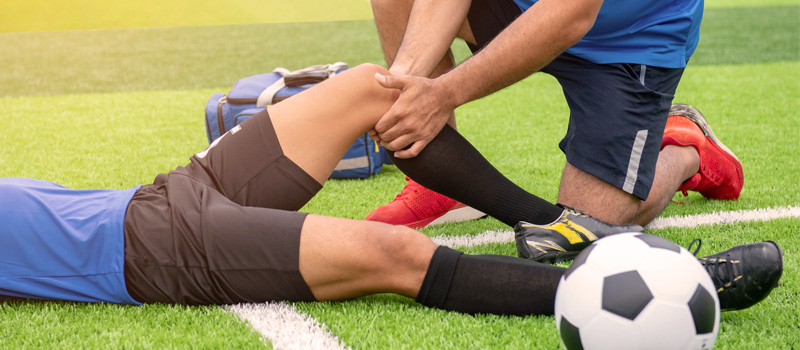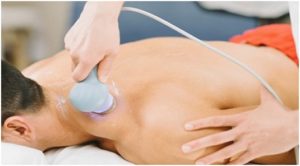Sports injuries take multiple forms such as strains, sprains, etc. Each form responds to a specific type of treatment. It can be confusing to decide which treatment to opt for. There is, however, one treatment common to different types of sports injuries- physiotherapy. Let’s check it out.
- Sprain
A sprain is a very common type of sports injury where the ligaments reinforcing a joint is stretched or torn. The common locations where sprains occur are the lumbar regions of the spine, the ankle, and the knee. Partially torn ligaments repair themselves slowly but completely torn ligaments require surgical intervention because severe swelling and inflammation in the joint can also damage surrounding tissues in the area. Sprains, where ligament injury is lesser, can be treated by physiotherapy.
- Strain
A strain is commonly called a “pulled muscle”. It is a condition caused by intense stretching of muscle which can cause tearing of muscle tissue. This injured muscle becomes painfully inflamed and the adjacent joints get immobilized. Strain is common in athletes, soccer players and cricket players. This usually does not require surgical intervention but regular therapeutic sessions conducted by trained physiotherapists can heal this condition.
- Achilles Tendinitis
Achilles Tendinitis is a serious injury that is seen among sprinters participating in athletic games. The Achilles tendon or the calcaneal tendon is the strongest in the body. But in some cases, it can get ruptured when there is a sudden jerk by sprinters during the start of their sprint. Immediately after the tearing of the tendon, there is pain above the heel and between the calf bulges. Achilles tendinitis can be treated by surgery and post-surgery physiotherapy is required for the athlete to get back into fitness.
- Tennis Elbow
Tennis elbow is a sports injury that is seen in tennis players and also in cricketers sometimes. The tendon between the forearm extensor muscles and the lateral epicondyle of the humerus is stretched due to overuse. When the muscles contract forcefully, the pain in this situation increases accordingly. Surgical intervention is sometimes required but tennis elbow can also be treated by regular physiotherapy sessions.
- Knee Injuries
Knee injuries usually refer to the overstretching and tearing of muscles or tissues in the knee. Knee injuries require medical treatment and surgery alongside physiotherapy sessions.
- Bone Dislocations
Bone dislocations are also very common in sports. Athletes and sportspeople suffer from bone dislocations where the bone gets forced out of the socket joint or hinge joints. Orthopedic treatments are required along with sessions of massage therapy and physiotherapy also.
- Bone Fractures
Common bone fractures also occur as well in athletes who usually require a little medical attention but after any kind of surgery, physiotherapy sessions prove to be highly beneficial for the recovery of the individual.
- Rotator Cuff
A rotator cuff is a group of muscles that surrounds the shoulder joint and fuses with the articular capsule. This injury is also very common in athletes and usually does not require serious medical assistance. Individuals suffering from this injury need thorough icing of the swollen region, and physiotherapy sessions to regain their flexibility and fitness.
No matter what type of injury you have faced, our physiotherapists and chiropractors are here at your disposal. Connect with us to book one-to-one sessions with our team at Prompt Physiotherapy.





 Often referred to as neck sprain whiplash can cause weakness, inability to sleep,backpain, stiffness, and pain around the neck. In most situations, the symptoms of whiplash are not immediatelynoticeable till a few days after, it is important to take cognizance of any symptom to prevent the neck sprain from becoming a long-term pain.
Often referred to as neck sprain whiplash can cause weakness, inability to sleep,backpain, stiffness, and pain around the neck. In most situations, the symptoms of whiplash are not immediatelynoticeable till a few days after, it is important to take cognizance of any symptom to prevent the neck sprain from becoming a long-term pain.

 In addition to the passive method of treatments discussed above, there are otheractive methods that your therapistcan recommend and engage you in if you have whiplash. These methods involvedifferent exercises to improve your motion and enhance your strength. It is necessary to embrace the fact that there is no general physical therapy method for everyone, only your therapist can choose a suitable program for you based on your history and health. Generally, physical therapies are efficient in the treatment of whiplash, utilizing them would help your neck heal in no time.
In addition to the passive method of treatments discussed above, there are otheractive methods that your therapistcan recommend and engage you in if you have whiplash. These methods involvedifferent exercises to improve your motion and enhance your strength. It is necessary to embrace the fact that there is no general physical therapy method for everyone, only your therapist can choose a suitable program for you based on your history and health. Generally, physical therapies are efficient in the treatment of whiplash, utilizing them would help your neck heal in no time.

